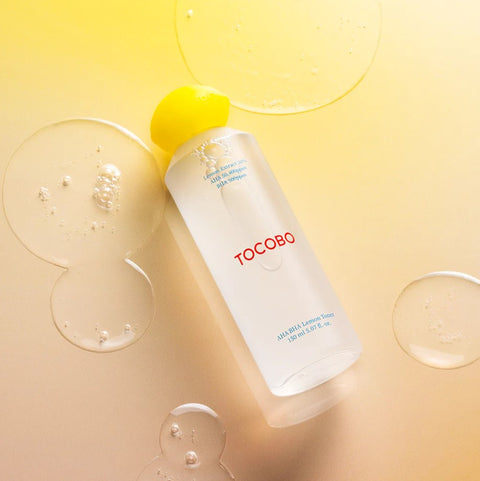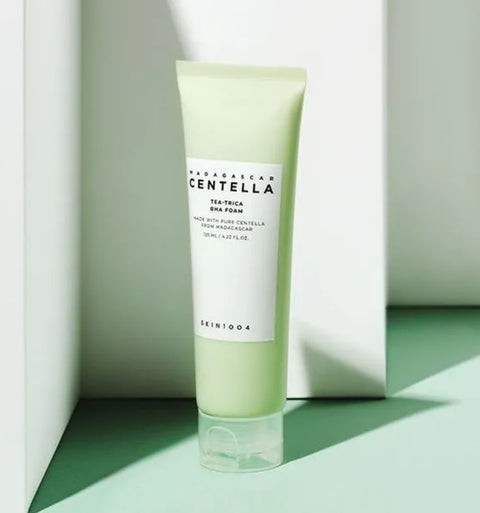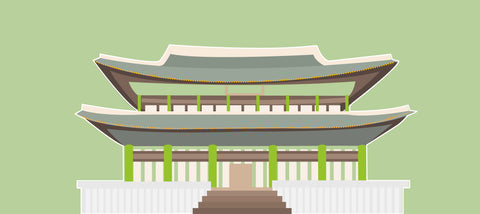Simply put, the biggest difference between Western and Korean cosmetics is the idea of the starting point and purpose of skin care: Western skin care focuses mainly on correcting skin problems after they already have appeared, when Korean skin care focuses on their prevention. Just to clarify, Western cosmetics mainly refers to beauty care trends and routines in North America and Europe, while Korean cosmetics refers to ones from South Korea.
Korean skin care mainly does not use aggressive treatment methods, but focuses on gentle caring of the skin, intensly moisturizing and use of sunscreen every single day. This all goes back to the Korean culture, where great value is placed on healthy and youthful skin, which is also associated with general health and confidence. Since Koreans mainly start skin care at a much younger age than Westerners, it is very natural for them to use, for example, sunscreen or serum on a daily basis. From childhood, they are taught a very holistic approach to skin care, and instead of thinking "now I have a wrinkle, what do I do?", Koreans start so-called well-age skin care long before the first wrinkles appear, mainly at the age of 20-25. Results are not expected to appear immediately, but skin care is a long-term process. For Koreans, skin care is also not a luxury, but just as obvious as brushing your teeth.
This also explains the good price level of the products. Since Korean skin care is in such high demand in South Korea, cosmetic companies have the opportunity and demand to not only invest in good product development and research, but also produce products that are in demand for their quality and price. About 80% of the world's cosmetics revenue comes from the Asian market alone.

Ingredients
Another of the most significant differences between the two is the use of ingredients. Whereas Western cosmetics rely largely on synthetic and chemically created ingredients, Korean products often contain a lot of natural ingredients. This does not mean that synthetic or chemically produced ingredients are necessarily worse or natural ones are better, but rather tells about the Korean attitude to skin care. Naturalness, gentleness and prevention are more effective when skin care is part of a normal routine, and you don't move on to maintaining the condition of the skin and taking care of it later, when problems have already arisen. This mentality naturally stems from Korean culture, where skin care is mainly started much earlier than in the West.
Korean cosmetics also contain ingredients that are not (at least not yet) common in Western products. Perhaps the most famous of these are snail mucin, centella, ginseng and heartleaf.
The concentrations of the ingredients are also different, as western products may contain e.g. glycolic acid in concentrations of 15-20%, but it is not at all unusual that in Korean products the concentration is 4%. Korean skin care focuses a lot on taking care of the skin barrier, so it is not compromised with too high concentrations of active ingredients. Even with smaller concentrations, the desired results are achieved, when the starting point for skin care is long-term, instead of anticipating quick results. A compromised skin barrier also leads to many skin problems, so for example in the treatment of acne, if you try to treat the problem with too harsh products, the problem actually gets worse when the skin's own protective layer is damaged and becomes more susceptible to infections.
You might also be interested in our article on traditional Korean skin care, hanbang cosmetics.

The much talked about skin care routine
Another difference between Western and Korean skin care is the versatility of the routine. Western skin care routines mainly favor simplicity and products that treat several skin concerns at once. Although Korean 10-step skincare routine is not exactly what it's commonly believed to be, it does reflects the Koreans dedication to skin care. The skin is treated with its current condition in mind, sometimes focusing on bringing additional moisture to the skin, other times, for example, additional brightening, depending on what the skin needs at that moment. Of course, this approach requires more planning and, depending on the condition of the skin, perhaps also wider variety of products.
The products are also applied to the skin using different ways, for example lymphatic massage methods, in which case the routine is a much more comprehensive whole of self-care than just adding skin care products quickly and rubbing them onto the face. Many characteristic ways of the Korean skin care routine have gradually made their way into Western countries, such as facial massage or the use of Gua Sha. Many Korean make-up trends have also found their way into Western cosmetics, such as cushion make-up creams.
Is Korean cosmetics better than Western?
This is of course a matter of opinion and there is no right answer. However, many who have struggled with various skin problems for a long time find help from the gentle approach of Korean cosmetics, and the popularity of k-beauty is not just a fluke. Korean cosmetics combine pioneering and innovative skin care technology and research. Korean cosmetics are often 5-7 years ahead of Western ones, and in addition, there is usually more emphasis on the user-friendliness of the products. If the product is unpleasant or difficult to use, its effectiveness does not matter so much, but it is easily left on the shelves of the closet.
Korean cosmetics are, as mentioned above, often significantly more affordable in terms of price, but still excellent in quality, which is explained by its huge market and demand in its country of origin. Western cosmetics, especially higher quality and more effective ones, are often significantly more expensive.
Starting a Korean skin care routine
Now you know the difference between Western and Korean skin care ✨You can read more about the Korean skincare routine from our article, where you will also find product recommendations for different skin types and for different stages of the skin care routine.
If you need help starting a Korean skin care routine, you can also take a look our starter kit for K-beauty, ask from our cosmetology, or stop by at one of our stores!


![[About Me] Rice Makgeolli Cleansing Foam](http://www.yeppo.fi/cdn/shop/files/about-me-rice-makgeolli-cleansing-foam-2.jpg?v=1704326845&width=480)

![[Anua] Peach 70% Niacin Serum Mask](http://www.yeppo.fi/cdn/shop/files/anua-peach-70-niacin-serum-mask-3.jpg?v=1703796396&width=480)





 info@yeppo.fi
info@yeppo.fi
 14 vrk palautusoikeus
14 vrk palautusoikeus
 PCI-DSS Compliant
PCI-DSS Compliant
 PayPal Buyer Protection
PayPal Buyer Protection
 Klarna – Pay Securely
Klarna – Pay Securely